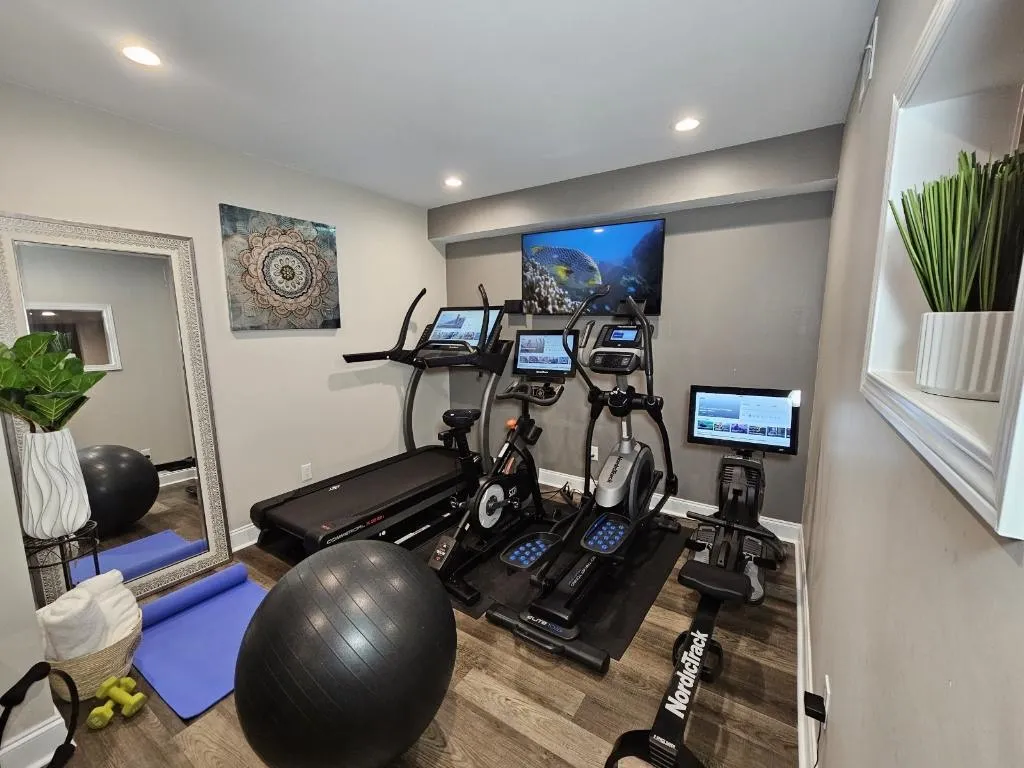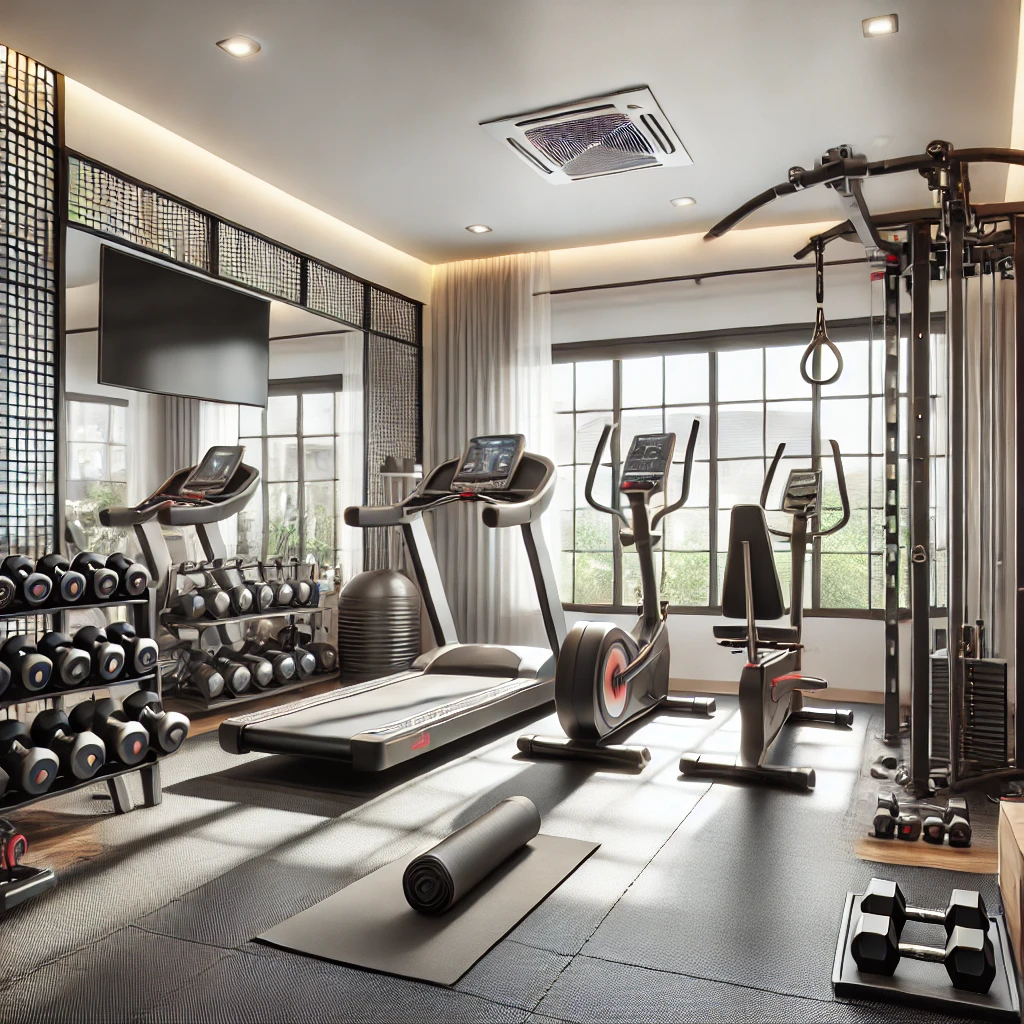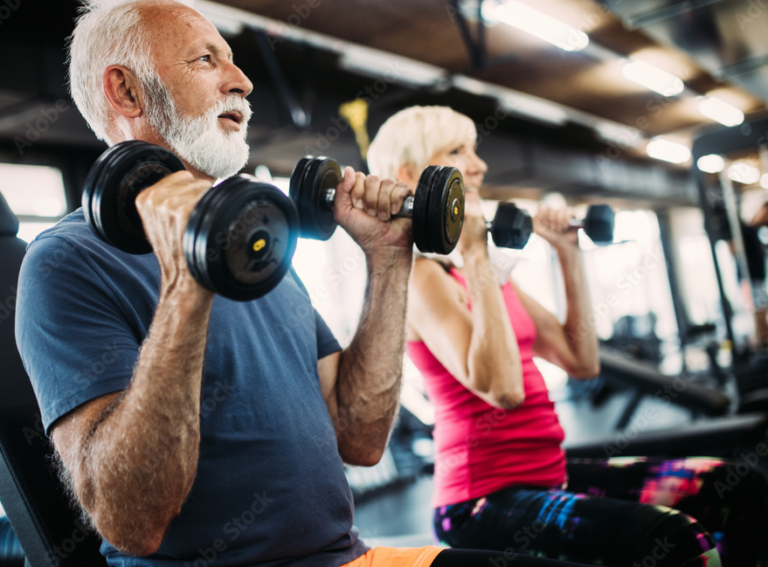Affiliate links may earn us a commission at no extra cost to you.
How to Set up a Home Gym


One of the best investments you can make for your fitness and well-being is setting up a home gym. A well furnished home gym enables you to customize your workouts to meet your unique demands, whether your goal is to reduce the cost of a gym membership, improve convenience, or establish a private workout area. To guarantee that you establish a room that is practical, effective, and inspiring, setting up a home gym calls for careful planning. Everything you need to know to transform an unfurnished room into a fully equipped exercise area will be covered in this article.
Organizing Your Home Gym
Evaluating Your Area
Choosing a location for your home gym is the first step before investing in any equipment.
The kind of exercises you intend to perform and the equipment you wish to use will determine how much room you need.
Compact Areas of 50-100 square feet are perfect for yoga, resistance bands, bodyweight exercises, and compact cardio equipment like foldable treadmills or jump ropes.
100–200 square feet can handle a more varied configuration, including a squat rack, dumbbells, barbells, and a stationary bike, is possible in medium spaces.
With power racks, cardio equipment, cable machines, and an open area for functional training, the spacious spaces where more than 200 square feet are ideal for a complete gym experience.
Examining the Benefits and Drawbacks
Convenience: Work out whenever you want without having to travel.
Long-term savings: Steer clear of commuting expenses and gym memberships.
Customization: Adjust your configuration to meet your fitness objectives.
Privacy: No having to deal with crowded gyms or waiting for machines. Cons: –
Upfront cost: Purchasing equipment can need a sizable upfront investment.
Requirements for space: Could occupy important room in your house.
Motivation: While some people do well in a gym setting, they could find it difficult to maintain their discipline at home.
Essential Equipment for a Home Gym
You will require cardio, strength, and functional movement equipment to guarantee a full-body exercise. The following are some crucial categories:
Cardiovascular Equipment
- A Treadmill is a great tool for running, jogging, and walking.
- Stationary Bicycle: Excellent for low-impact endurance and cardiovascular exercise.
- Rowing Machine: This exercise equipment works the entire body and increases cardiovascular stamina.
- Jump Rope: An inexpensive and compact exercise choice.
- Elliptical Trainer: An alternate low-impact exercise for people with joint issues.
Equipment for Strength Training
- Dumbbells: An adaptable exercise equipment.
- Barbell and Weight Plates: Essential for strenuous complex exercises like deadlifts and squats.
- Resistance Bands: Excellent for mobility exercises, strength training, and recovery.
- Kettlebells: Good for snatches and swings, among other dynamic exercises.
- A must-have for strength training, the squat rack with pull-up bar enables barbell lifts and pull-ups.
- Adjustable Bench: Allows for a variety of sitting and pressing activities.
- Suspension trainers or cable machines (like the TRX) provide a variety of resistance exercises without the need for large weights.
Exercise Accessories that are a Must-Have for Home Gyms
- Yoga Mat: Perfect for yoga, core, and stretching workouts.
- Foam Roller: Promotes mobility and muscle rehabilitation.
- Medicine Ball: Excellent for core training and explosive exercises.
- Pull-Up Bar: This can be incorporated into a squat rack or mounted on a doorway.
- Battle Ropes: Great for endurance training and high-intensity exercises.
How to Construct a Home Gym
Step 1: Select Your Site
Choose a space in your house that may be used for exercise. This might be a portion of your living room, a garage, a basement, or even a spare room. Think about lighting, flooring, and ventilation.
Step 2: Create a Budget
Determine the amount of money you are prepared to invest. With the necessary tools, you can begin small and grow over time. Saving money can be achieved by searching for discounts or purchasing used equipment.
Step 3: Install Flooring
Installing interlocking foam tiles or rubber matting will protect your floor and cut down on noise. These also offer a firm platform for high-impact workouts like lifting weights.
Step 4: Invest in Necessary Equipment
Start with multipurpose equipment such as a pull-up bar, a bench, and dumbbells. Add a treadmill or stationary cycle, barbells, and a squat rack if you have more money and room.
Step 5: Set Up Your Area
Equipment should be arranged to optimize movement efficiency. Smaller goods should be kept in storage boxes or on shelves. For a better workout, keep the area clutter-free.
Step 6: Include Motivating Components
Use a whiteboard to record progress, a sound system for music, mirrors to keep an eye on form, or posters with inspirational sayings to stay motivated.
Step 7: Create a Routine Regularity is essential. Make a plan for your exercise and follow it. Maintaining your commitment will be aided by a disciplined program and time commitment.
In Conclusion
Establishing a home gym is a fulfilling endeavor that can result in increased convenience, long-term savings, and fitness. You may design a gym that helps you reach your fitness objectives by carefully arranging your space, making sensible financial decisions, and choosing the appropriate equipment. With a home gym, you can work out whenever you want without having to leave your house, whether your preference is for weightlifting, cardio, or functional training. Your home gym can become a transformative space with the correct setup and inspiration, making it simpler than ever to maintain an active and healthy lifestyle.



